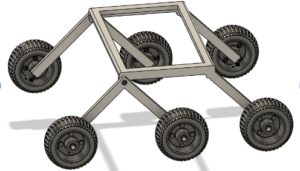Tracking Group:
The prototype of the tracking system will use a webcam and YOLO object detection software to successfully detect a unique person, track them, and detect the distance between them and the webcam. The audience for the prototype will be the team and other stakeholders, and continuous communication will occur between the team and the stakeholders to ensure that the product will meet both the functional requirements and the end user’s needs.
One of these functional requirements is the “stay close to user” functional requirement. The solution needs to be able to track and stay close to the user, despite a non-uniform work environment. Therefore, the team will be making sure that the tracking capability will work despite other objects being in their field of vision.
![]()
Electrical Group:
The alpha prototype for the electronic subsystem will be a physical breadboard with buttons that control a separate light and alarm system. The goal is to test a range of dB for the alarm system as well as effective lumens for the lighting and alarm system. To model the expected behavior as a proof of concept, the team will be creating a simulation of the electronic system as well. The audience for the prototype will be composed of the Safer Strides team as well as Lafayette students in general who would be the main users of the robot.
The prototype is intended to test the functional requirements classed as objectives, namely the ‘Illuminates Surroundings’ and ‘Brings Attention to User’ requirements, as well as the general accessibility of the robot while it is operating.

Structure Group:
The structural group’s alpha prototype group will work in teams on the wheel base, body shape and size, and control panel interface layout. Each of these aspects will help to contribute to the final form of the robot. Wheel base research will help to ensure that the robot is capable of following a user across a variety of terrain. The wheelbase is expected to be able to at least climb a standard Pennsylvania curb height. The appearance team will work toward choosing a shape and color for the robot. The goal for appearance is to make the robot as comforting and approachable as possible. Finally, the control panel layout team will make the most user friendly interface. The control panel must be intuitive and quick to understand in stressful situations. The prototype is intended to address the functional requirements ‘make the user feel safer’, ‘remain with the user’, and ‘bring attention to the user.’
